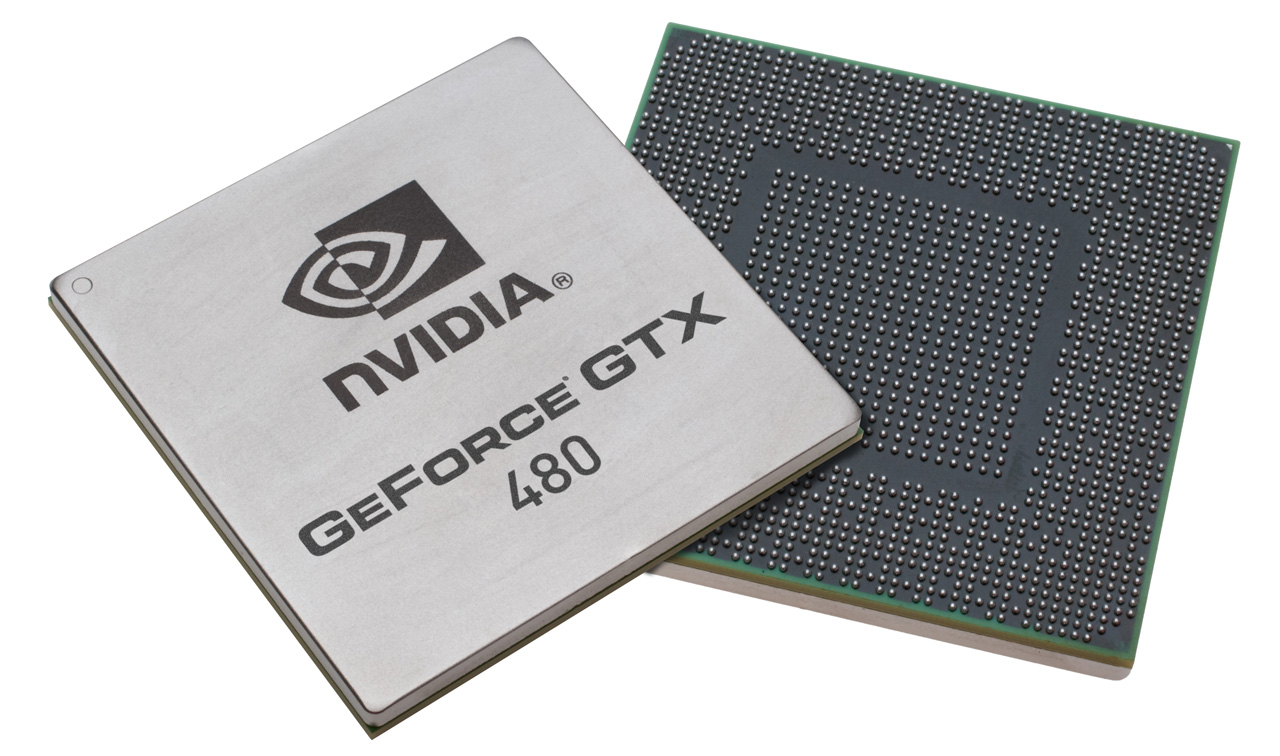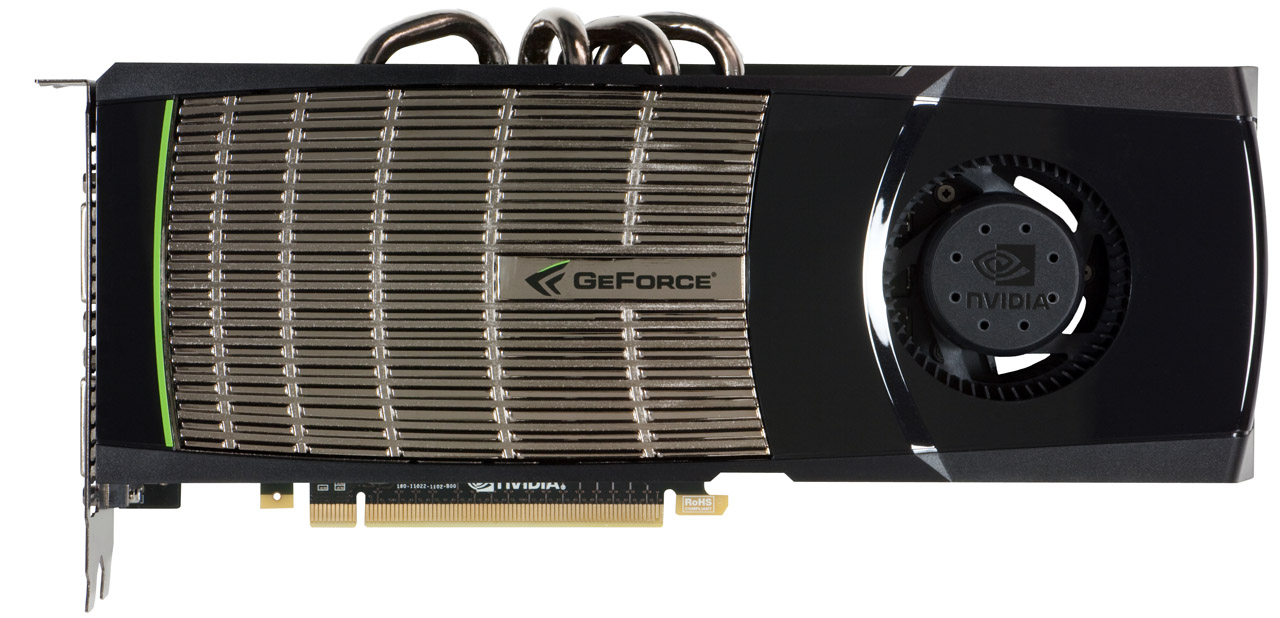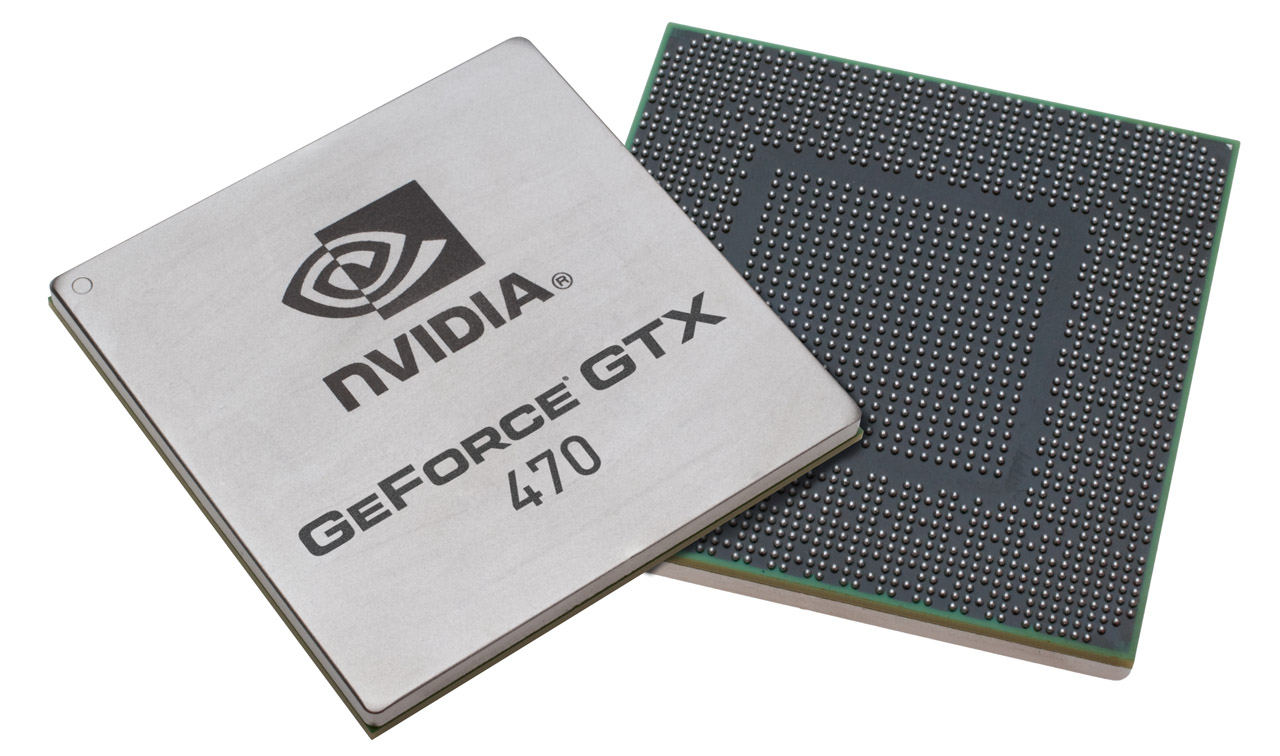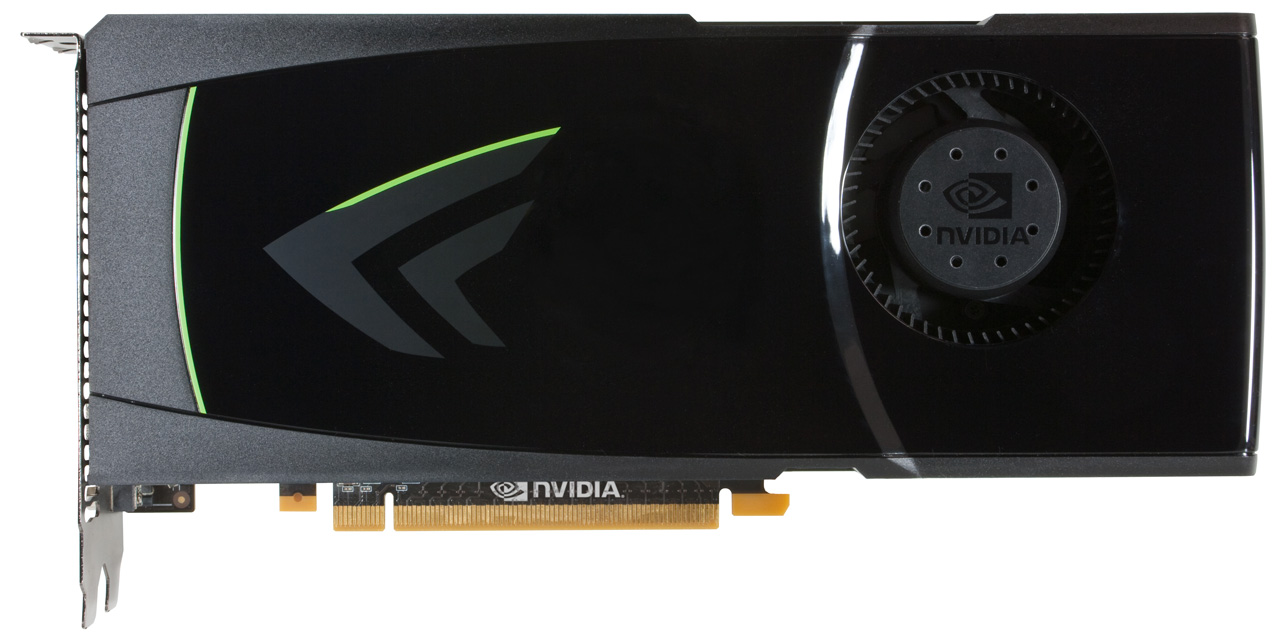GeForce GTX 480 And 470: From Fermi And GF100 To Actual Cards!
Meet The GeForce GTX 480 And 470
Although the GeForce GTX 480 and 470 center on the same graphics processor, as with AMD’s Radeon HD 5870 and 5850, they employ significantly different card designs.
GeForce GTX 480
The GeForce GTX 480 consists of a 10.5” PCB, making it half an inch shorter than the Radeon HD 5870. It requires one eight-pin and one six-pin connector to supplement the power drawn over PCI Express. Nvidia rates the board for a 250W TDP—significantly less than Radeon HD 5970, which itself barely ducks under the PCI-SIG’s 300W electromechanical ceiling—and recommends a 600W+ power supply.
But the story doesn’t end with board power. Though the GeForce GTX 480 would seem, on paper, less power hungry than AMD’s flagship, it’s clearly a challenge to keep cool. The card’s thermal solution is among the most aggressive I’ve seen from a reference design. A sink draws heat from the GPU surface and memory ICs. Five heatpipes conduct thermal energy away and into an array of aluminum fins (one is hidden in the picture), while a typical blower-type fan pushes air through the enclosed shroud and out the back of the card.
Most unique, perhaps, is that the surface of the card is actually part of the heatsink, above the fin array. Normally, this would be a part of the card you could grab onto when pulling it out of a system. But when I burnt my hand on it, I thought a temperature reading would be interesting. Turns out that, during normal game play (running Crysis, not something like FurMark), the exposed metal exceeds 71 degrees C (or about 160 degrees F). This will have some ramifications for running two cards in SLI, but we’ll get into that shortly.
| Header Cell - Column 0 | GeForce GTX 480 | GeForce GTX 470 |
|---|---|---|
| Graphics Processing Clusters (GPCs) | 4 | 4 |
| Streaming Multiprocessors (SMs) | 15 | 14 |
| CUDA Cores | 480 | 448 |
| Texture Units | 60 | 56 |
| ROP Units | 48 | 40 |
| Graphics Clock | 700 MHz | 607 MHz |
| Shader Clock | 1,401 MHz | 1,215 MHz |
| Memory Clock (Data Rate) | 924 MHz (3,696 MT/s) | 837 MHz (3,348 MT/s) |
| Memory Capacity | 1.5GB GDDR5 | 1.25GB GDDR5 |
| Memory Interface | 384-bit | 320-bit |
| Memory Bandwidth | 177.4 GB/s | 133.9 GB/s |
| Fillrate | 42.0 GTexels/s | 34.0 GTexels/s |
| Manufacturing Process | 40nm TSMC | 40nm TSMC |
| Form Factor | Dual-slot | Dual-slot |
| Display Outputs | 2 x DL-DVI, 1 x mini-HDMI | 2 x DL-DVI, 1 x mini-HDMI |
GeForce GTX 470
The GeForce GTX 470 sports a more elegant package. It’s 9.5” long—again, half an inch shorter than the competition, AMD’s Radeon HD 5850. Two six-pin connectors provide all of the auxiliary power needed to supplement the PCI Express interface, maxing out at up to 215W (a little less than 30W more than a Radeon HD 5870). Gone are the heatpipes and exposed surface sink. Instead, the dual-slot card is completely enclosed, pulling air from the blower toward the rear and pushing it out the I/O bracket.
Get Tom's Hardware's best news and in-depth reviews, straight to your inbox.
This board’s idle and load temperatures aren’t as aggressive as the GTX 480, though both cards are able to withstand GPU thermal thresholds as high as 105 degrees C. It’s actually interesting to watch these cards’ thermal properties in real-time. As load is applied, temperatures increase to the peak levels you’ll see at the end of this piece (97 and 96 degrees for the GTX 480 and 470, respectively), at which point the fan kicks up a notch to bring temps down by four or five degrees. Most other high-end cards we’ve seen get hotter and hotter, but eventually taper off just under the thermal threshold in response to faster fan speeds.
Current page: Meet The GeForce GTX 480 And 470
Prev Page Nvidia’s GF100 Gets Scaled Back Next Page Tessellation And Anti-Aliasing-
restatement3dofted I have been waiting for this review since freaking January. Tom's Hardware, I love you.Reply
With official reviews available, the GTX 480 certainly doesn't seem like the rampaging ATI-killer they boasted it would be, especially six months after ATI started rolling out 5xxx cards. Now I suppose I'll just cross my fingers that this causes prices for the 5xxx cards to shift a bit (a guy can dream, can't he?), and wait to see what ATI rolls out next. Unless something drastic happens, I don't see myself choosing a GF100 card over an ATI alternative, at least not for this generation of GPUs. -
tipoo Completely unimpressed. 6 months late. Too expensive. Power hog. Performance not particularly impressive. The Radeon 5k series has been delivering a near identical experience for 6 months now, at a lower price.Reply
-
tpi2007 hmmm.. so this is a paper launch... six months after and they do a paper launch on a friday evening, after the stock exchange has closed.. smart move by Nvidia, that way people will cool off during the weekend, but I think their stocks won't perform that brilliantly on monday...Reply -
Godhatesusall high power consumption, high prices along with a (small, all things considered) performance edge over ATI is all there is. Are 100$ more for a gtx 480 really worth 5-10% increase in performance?Reply
Though the big downside of fermi are temps. 97 is a very large(and totally unacceptable) temperature level. IMO fermi cards will start dying from thermal death some months from now.
I just wanted competition,so that prices would be lower and we(the consumers) could get more bang for our buck. Surely fermi doesnt help alot in that direction(a modest 30$ cut for 5870 and 5850 from ATI and fermi wont stand a chance). It seems AMD/ATI clearly won this round -
Pei-chen Wow, it seems Nvidia actually went ahead and designed a DX11 card and found out how difficult it is to design. ATI/AMD just slapped a DX11 sticker on their DX10 card and sells it as DX11. In half a year HD 5000 will be so outdated that all it can play is DX10 games.Reply -
outlw6669 Kinda impressed :/Reply
The minimum frame rates are quite nice at least...
Lets talk again when a version with the full 512 SP is released.




